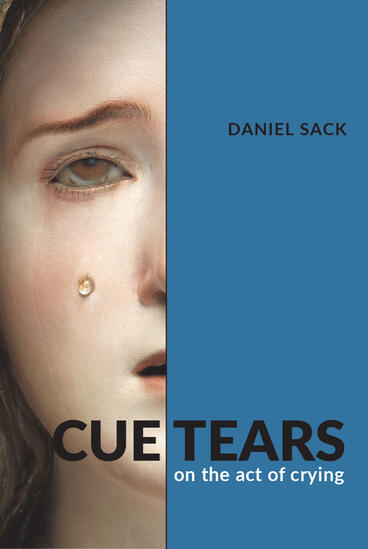Cue Tears
On the Act of Crying
Lively essays on the meanings and methods of tears in performance
Description
Crying holds a privileged place in conversations around emotions as an expression of authentic feeling. And yet, tears are ambiguous: they might signal the most positive and negative of affects; they might present a sincere revelation of self or be simulated to manipulate others. Unsurprisingly, tears figure prominently on stage and on screen, where actors have experimented with the mechanics of making tears. Cue Tears: On the Act of Crying uses tears as a prism through which to see some of the foundational problems and paradoxes of acting and spectatorship anew, including matters of authenticity and sincerity, the ethics of the witness, the interaction between a speech act and its affective force, liveness and documentation.
Across seven semi-autonomous essays, Cue Tears looks at the mechanisms of tear production, internal and external techniques that actors use to weep, and the effects of tears in performance situations on the stage, in the gallery, and in the classroom. The writing moves with a light touch between theory and criticism of a broad range of instances from literature, theater, performance art, visual art, and cinema, while also embracing a strong autobiographical and personal slant. Author Daniel Sack’s father was a biochemist who studied tears and collected his son’s tears for research during his childhood. These “reflex tears” were produced as a physical response to irritation—an eye stretched past the point of blinking, a cotton swab up the nose. This childhood occupation coincided with his first years taking acting classes, trying to learn how to cry “emotional tears” onstage through psychological stimulation and the recollection of memory. Cue Tears investigates these memories and methods, finding that tears both shore up and dissolve distinctions between truth and artifice, emotional and physical, private and public, sad and humorous.
Daniel Sack is Professor in the Department of English and the Commonwealth Honors College at the University of Massachusetts Amherst. His other books include After Live: Possibility, Potentiality, and the Future of Performance and Imagined Theatres: Writing for a Theoretical Stage.
Reviews
“In this beautifully conceived study of the performative life of tears, Daniel Sack invites us to consider how crying operates as ‘an offering of oneself in relation to another.’ With a diverse set of essays that include a restaged conversation between the author and his biochemist father, a reconsideration of conceptual artists who use tears to provoke reconsiderations of the public and private self, and an exploration of theatrical props and devices used to symbolize or provoke crying, Sack compels us to dwell with him at the limits of affect, empathy, and performance itself. This is a wonderful book, moving in its invocations and astute in its tear-soaked provocations.”
- Patrick Anderson, University of California San Diego
“Most of the world’s languages refer to tears as plural, even when they are streaming in a single current down the cheeks. Daniel Sack organizes Cue Tears around that philological fact: each of the seven compact chapters drops as a separate essay in the shape of a tear, but they all flow together in the end. Exceptionally good—clear, cogent, often evocative, and sometimes just stunning.”
- Joseph Roach, Yale University
“Cue Tears is a rich and movingly autobiographical meditation on weeping in theater, performance art, and academia. Daniel Sack’s finely wrought essays investigate how the spectacle of weeping dissolves many of our presumed distinctions—real/staged, authentic/artificial, willed/involuntary, private/public—inherited from traditional discourses of sentiment.”
- Andrew Sofer, Boston College

